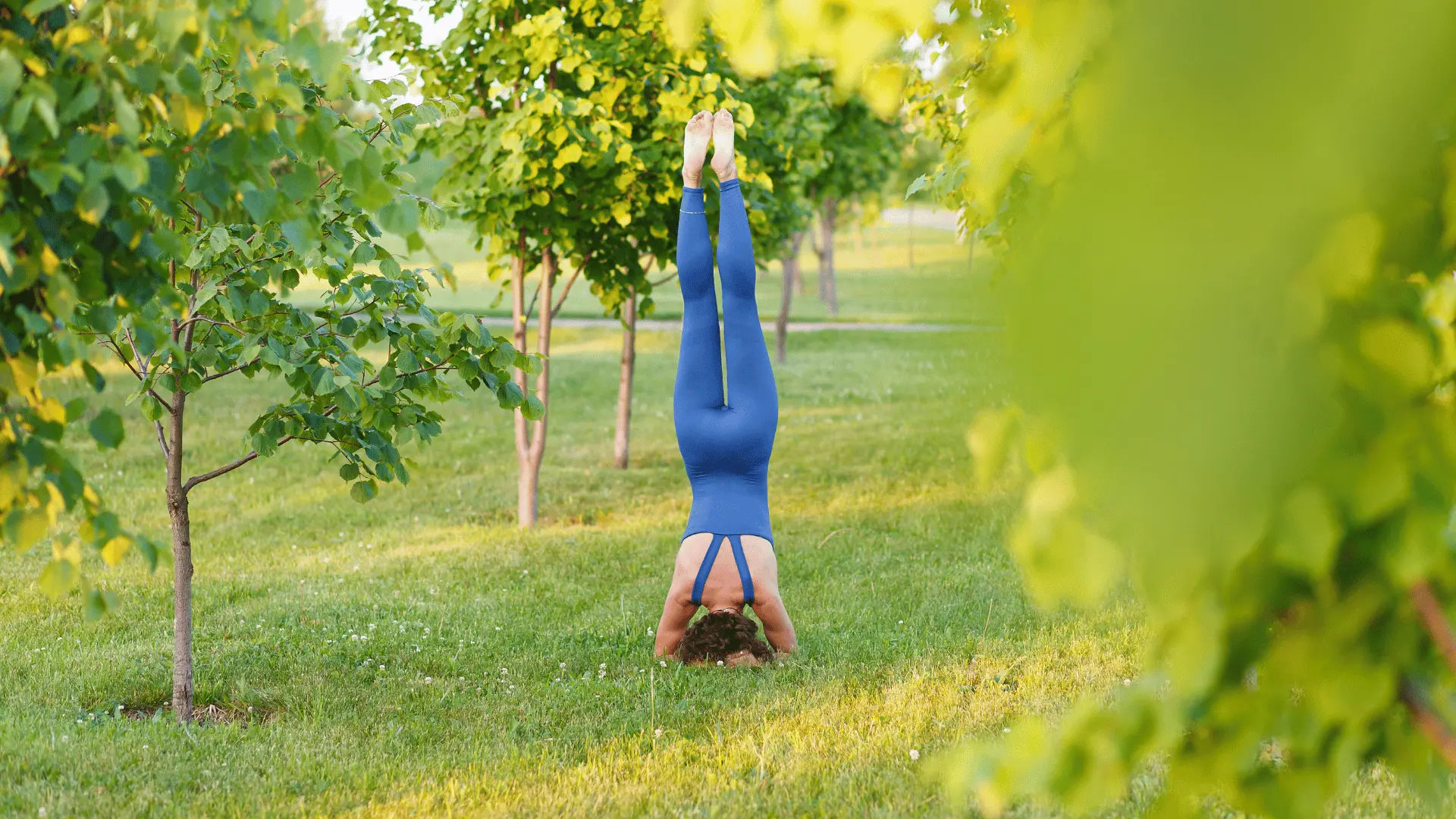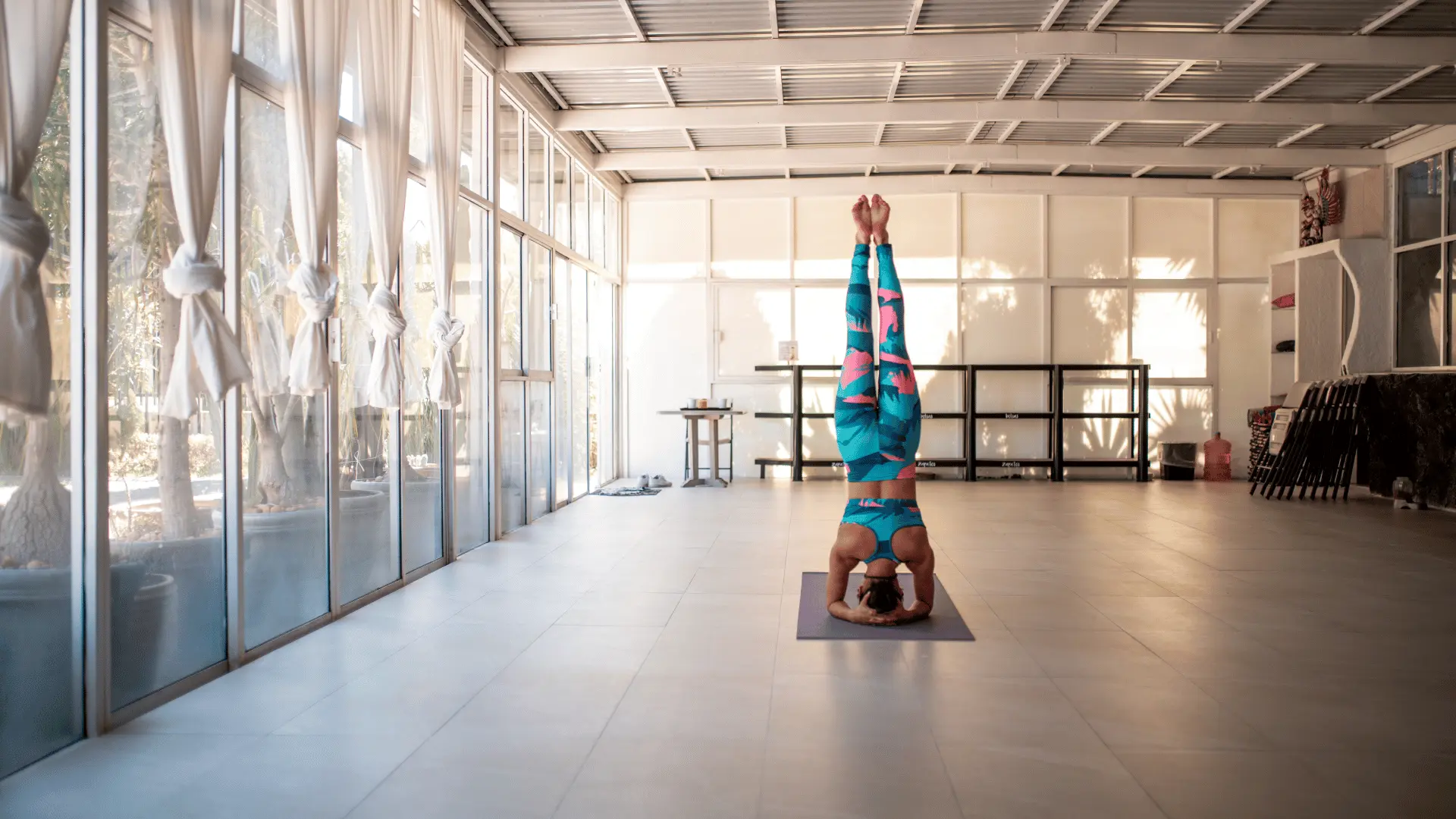Shirshasana – Headstand Pose: Steps, Benefits, and Cautions
Shirshasana, often called the “Headstand Pose,” is a quintessential yoga posture that has been revered for centuries for its myriad physical, mental, and spiritual benefits. Known as the “king of asanas,” Shirshasana is a challenging inversion that offers a transformative experience when practiced correctly. There are varying opinions on how long you should hold Shirshasana. Some teachers recommend a maximum of 2 minutes , while others suggest holding it for 3 to 5 minutes. In this blog, we will delve into the detailed steps to perform Shirshasana, explore its numerous benefits, and highlight essential cautions to ensure a safe and effective practice.

Understanding Shirshasana
Shirshasana is derived from the Sanskrit words “Shirsha” meaning “head” and “Asana” meaning “pose” or “posture.” It involves balancing the body on the head while the legs are extended upward. This pose is a powerful inversion that reverses the effects of gravity, encouraging fresh blood flow to the brain and stimulating various physiological systems.
Benefits of Shirshasana
- Improves Circulation: By inverting the body, Shirshasana facilitates better blood flow to the brain, which can enhance cognitive functions and mental clarity. Improved circulation also aids in rejuvenating the facial skin, giving it a healthy glow.
- Strengthens the Upper Body: This pose requires and builds strength in the shoulders, arms, and upper back. Holding the body upright engages these muscles, improving overall upper body strength.
- Enhances Core Stability: Balancing in Shirshasana requires significant core strength. Practicing this pose regularly can strengthen the abdominal muscles and improve overall core stability.
- Stimulates the Endocrine System: Shirshasana stimulates the thyroid and pituitary glands, which can help in regulating hormones and boosting overall metabolism. This can contribute to better hormonal balance and energy levels.
- Promotes Mental Calmness: The inversion encourages a shift in perspective and can help calm the mind. It is often used in meditation practices to cultivate a sense of inner peace and focus.
- Improves Digestion: Practicing this pose through online yoga classes for digestion massages the abdominal organs and stimulates the digestive system, which can aid in digestion and relieve issues such as constipation.
- Enhances Balance and Coordination: Balancing on the head requires concentration and coordination. Regular practice of Shirshasana can improve overall balance and body awareness.
Steps to Practice Shirshasana
Performing Shirshasana requires preparation and patience. It is recommended to practice this pose under the guidance of a qualified yoga instructor through online yoga classes , especially if you are a beginner.

Here’s a step-by-step guide to help you master Shirshasana:
Preparation
- Warm-Up: Begin with a thorough warm-up to prepare the body for the inversion. Incorporate poses that open the shoulders, strengthen the core, and stretch the legs, such as Downward Dog, Plank Pose, and Dolphin Pose.
- Ensure a Safe Environment: Practice Shirshasana on a non-slippery surface like a yoga mat. Placing a folded blanket or cushion under your head may be helpful for added support.
Execution
- Starting Position: Begin in a kneeling position on your mat. Place your hands on the floor and interlace your fingers behind your head. The forearms should rest on the mat, forming a tripod with your head.
- Head Placement: Gently place the crown of your head on the mat, ensuring that the back of your head is supported by your interlaced fingers. The top of your head should not bear the weight.
- Lift the Hips: Tuck your toes under and lift your hips towards the ceiling, coming into a position similar to Dolphin Pose. This will help you create the necessary alignment and preparation for lifting your legs.
- Leg Lift: Slowly lift one leg towards the ceiling, keeping it straight. As you gain confidence, lift the other leg, bringing both legs together above you. Engage your core and maintain a steady gaze upward.
- Balance: Focus on finding your balance. Keep your body in a straight line from head to heels. Maintain a steady and calm breath. Ensure that the weight is evenly distributed between your head and forearms.
- Hold the Pose: Initially, hold Shirshasana for 15-30 seconds. Gradually increase the duration as you become more comfortable and experienced in the pose.
- Coming Out of the Pose: To exit the pose, gently lower one leg at a time back to the mat. Rest in Child’s Pose or Downward Dog for a few moments to counteract the inversion and restore blood flow.
Cautions and Contraindications
Shirshasana is a demanding pose that requires careful attention to alignment and technique. Here are some important cautions and contraindications to consider:
- Neck and Spine Issues: Individuals with neck or spine injuries or issues should avoid Shirshasana or practice it with extreme caution. The pose places significant pressure on the neck, so it’s essential to have a strong and stable foundation.
- High Blood Pressure: If you have high blood pressure or cardiovascular conditions, consult with a healthcare professional before attempting Shirshasana. The inversion can increase blood pressure and strain the cardiovascular system.
- Glaucoma or Eye Issues: Shirshasana can put pressure on the eyes, so individuals with glaucoma or other eye conditions should avoid this pose or practice it under professional supervision.
- Pregnancy: Pregnant women should avoid Shirshasana as it can put undue pressure on the abdominal organs and the developing fetus. Modified poses and prenatal yoga practices are recommended instead.
- Recent Injuries or Surgeries: If you have recently had surgery or experienced an injury, particularly in the shoulders, arms, or head, it is best to avoid Shirshasana until you have fully healed.
- Lack of Strength or Experience: Beginners should build strength and familiarity with preparatory poses before attempting Shirshasana. Practicing under the guidance of an experienced instructor is crucial for safety and effectiveness.
Tips for Safe Practice

- Build Foundation: Focus on building strength in the shoulders, arms, and core through preparatory poses such as Dolphin Pose, Plank Pose, and Forearm Stand.
- Use Props: Utilize props such as a wall or blocks for support when starting. Practice against a wall to gain confidence and learn proper alignment.
- Listen to Your Body: Always listen to your body and respect its limits. If you feel discomfort or strain, come out of the pose and rest. Avoid pushing yourself beyond your comfort zone.
- Practice Regularly: Consistent practice will help you gradually build the strength, balance, and confidence needed for Shirshasana. Patience and perseverance are key.
- Seek Professional Guidance: If you are new to Shirshasana, consider working with a certified yoga instructor who can provide personalized guidance and adjustments to ensure a safe practice.
Conclusion
Shirshasana, or the Headstand Pose, is a profound and empowering yoga posture that offers numerous physical and mental benefits. Its ability to enhance circulation, strengthen the upper body, and promote mental calmness makes it a valuable addition to a regular yoga practice. However, due to its complexity and the demands it places on the body, it is essential to approach Shirshasana with proper preparation, caution, and guidance.
By following the detailed steps, being aware of the cautions, and practicing with mindfulness, you can experience the transformative effects of Shirshasana while ensuring a safe and rewarding practice. Remember, yoga is a journey, and each pose, including Shirshasana, is a step towards greater self-awareness and well-being.




